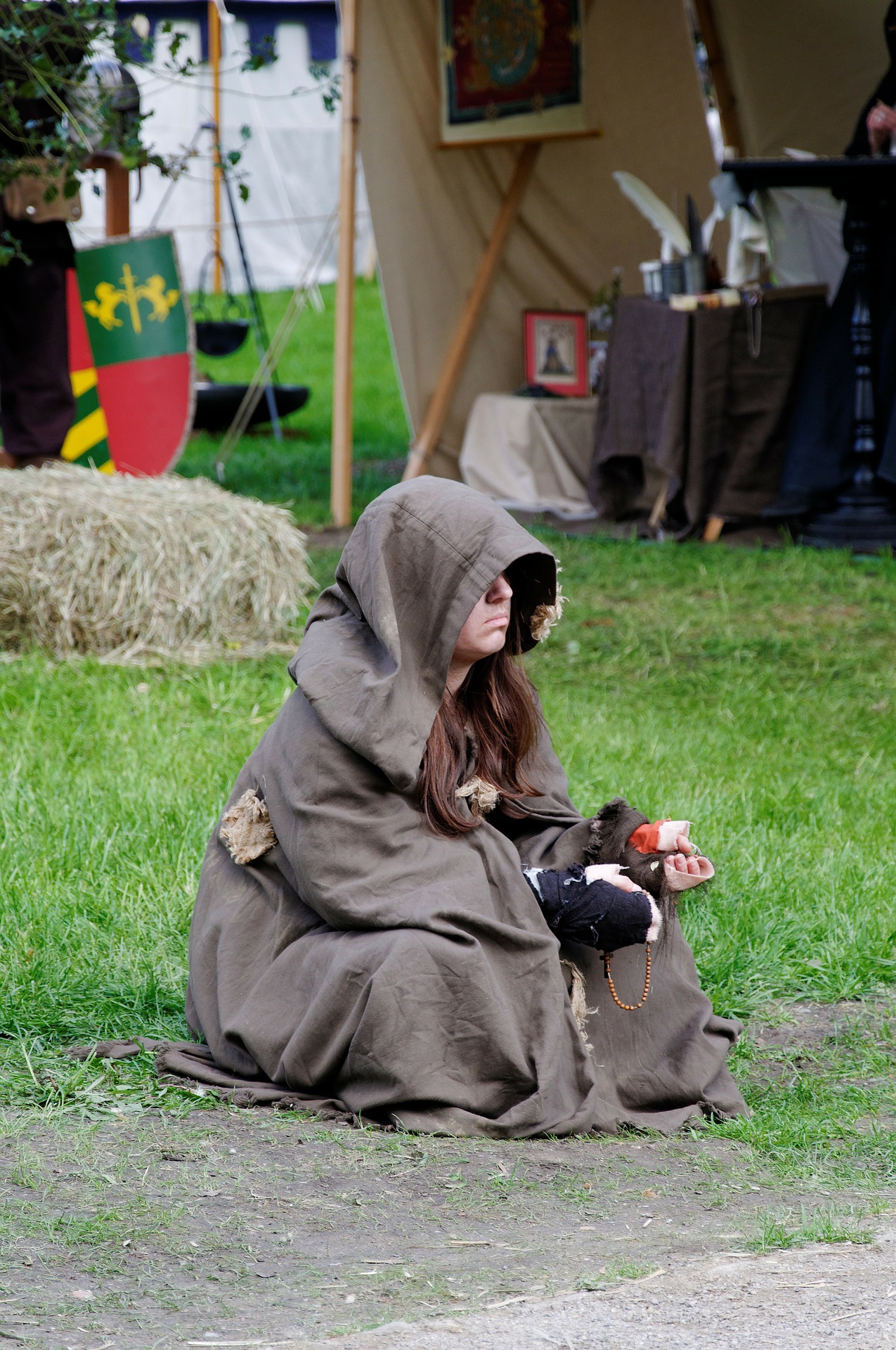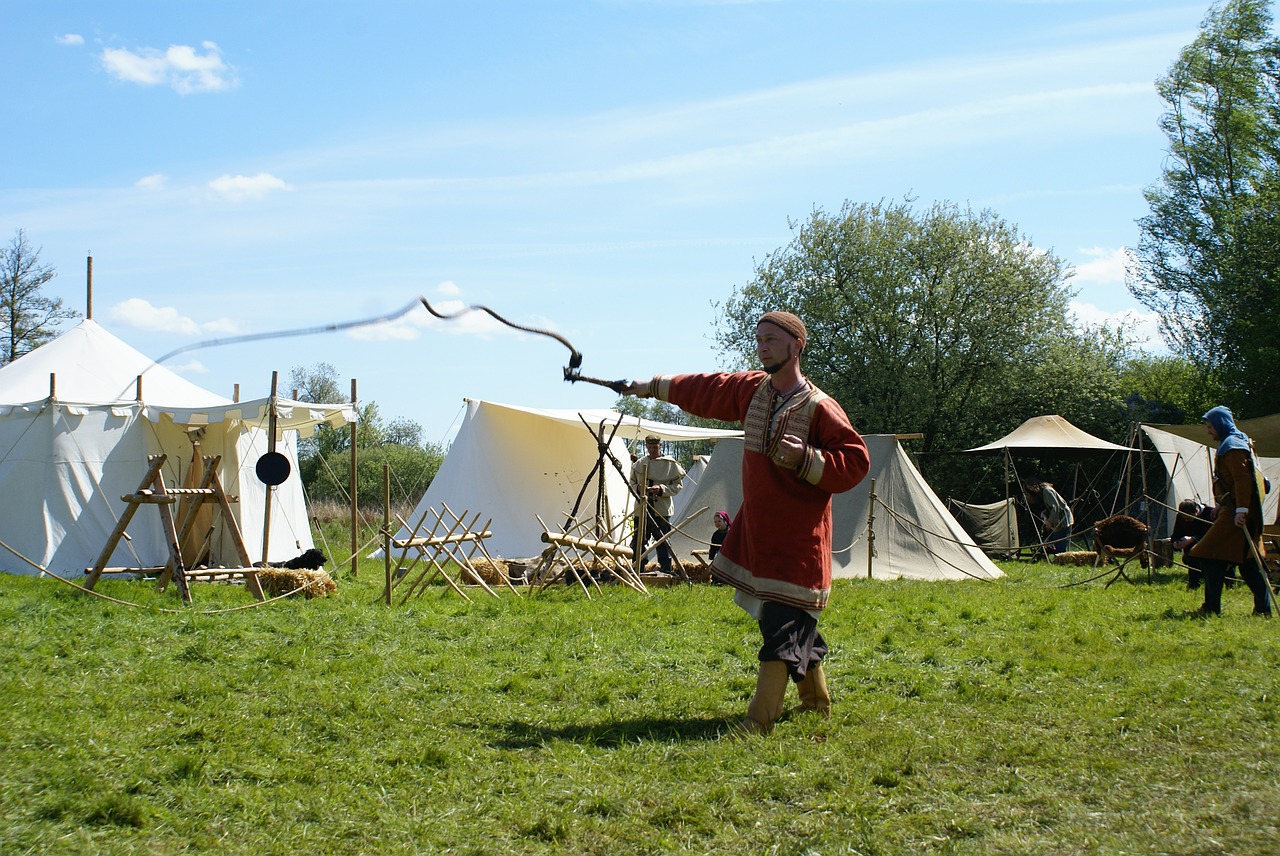There were many kinds of social gatherings in ancient Ireland. But one assembly rose above all others.
The óenach.
Óenach, pronounced “Oh-nach”, is generally understood to be an assembly equated with a fair or market. However, the óenach’s purpose was far greater, and varied upon the size, season, and location.
The óenach centered around an official meeting place, usually of ancestral significance, such as a burial mound or place of inauguration. At these gatherings, clans would congregate under the calling of their local or provincial king to conduct important business, see laws enacted, and participate in symbolic sporting competitions.
With the passing of time more merrymaking came into play at these assemblies. Eventually trading became commonplace as individuals used the gathering as an opportunity to sell excess surplus.
Little research is available to shed light on the size and scope of the óenach.
Was there a standard structure in its setup? Did a particular order of events govern the day’s goings? These are just some of the questions historians have begun to delve deeper into recently.
It is presumed that at the smallest level, each túath (basically a political territory) held some form of assembly. Larger assemblies could consist of a gathering of several túatha (territories), Such as the túatha of Thomond, ruled by the Dal Cais, whose óenach was held at Magh Adhair.
The largest óenach, ideally, was the provincial assembly. Representatives from each clan, in each túath, from the entire province, would be expected to attend.
Lore tells that the King of Tara held an assembly where representatives from all the provinces came to pledge tribute and fealty to him as high king of Ireland. To what extent the elaborate scope of the high king’s óenach was based in truth is a matter of debate. Though the Uí Neill kings of Tara stylized themselves as High Kings of Ireland, they did not always hold the loyalties of the surrounding provincial kings and their clans.

The Irish óenach shared many commonalities with the Scandinavian Alþing (Althing), or annual assembly.
During Ireland’s Viking era, the Norse established prominent trade towns and actively exchanged with their Irish counterparts. There’s little doubt the Norse and Danes who established themselves in Ireland, observed Irish assemblies and found they struck a familiar chord.
Connections were soon made. Their common cultural ground coupled with the many political and marital ties between Norse and Irish, undoubtedly made the local óenach a lucrative prospect for Scandinavian merchants.
Because Viking invaders paved the way for Scandinavian settlers to establish themselves in Ireland, Irish and Scandinavian cultures blended rapidly. As the Viking era progressed and new waves of Norsemen came into Ireland, they discovered their brethren to be indistinguishable from the native Irish.
Politics of the Óenach

Politics were of prime importance at the óenach, whether on the local level, or provincial. Legal and judicial functions took place at the assembly, such as trials. A king, be he territorial, or provincial, would enact laws and ordinances at the óenach. He would pledge his people, and gain pledges from them in turn.
Since the óenach probably convened on seasons that divided the year, Samhain (winter time and beginning of the Irish year) Imbolc (springtime), Beltaine (summertime), and Lughnasad (autumn and harvest) a king commonly received his renders or tribute from his people during assemblies. It is thought that the favored season for larger assemblies was during the season of Lughnasad (pronounced “loo-na-sa”), the Feast of Lugh, which happened during harvest time in early August.
Consequentially, in Irish myth, Lughnasadh was believed to have begun by the god Lugh (modern Lú) as a funeral feast and sporting competition to commemorate his foster-mother, Tailtiu, who died of exhaustion after clearing the plains of Ireland for agriculture. The Óenach Tailtiu became the most infamous fair in Ireland, and is the fair associated with Tara, the residence of Ireland’s high kings. Historically, Óenach Tailtiu became famous for its contests of strength and skill, and a favored time for contracting marriages, which was another common political purpose for assemblies.
Entertainment

Earlier we asked the question whether an order of events governed the óenach. Well, for many, we just don’t know. But others, like the fair of Carman, we discover that the games were the driving force behind the fair.
Each day of Carman’s óenach, except for the last, was governed by the games of a particular clan or class. One day was set apart for the Ossorian horse and chariot races. Another day allotted for races only princes could compete in. Still another day was devoted to games only for women.
Apart from races, fair-goers could expect sports, music, feasting, drinking, and royal processions. Jugglers and acrobats were common sources of entertainment for the crowds as well.
Bards were a popular presence at the óenach. Of course, bard is a general term, and the bardic profession was broken up into classes with different functions. Some were poets, others musicians. Some excelled in both skills. Both would perform for the masses, reciting heroic tales from memory, histories, genealogies, and singing the praises of their king and clan. In essence, the people were not only entertained, but educated about their past and their laws at the óenach.
The “King’s Peace”

At a gathering where clans and cultures collided, one might expect trouble to naturally arise. Ireland’s tumultuous reputation for warring clansmen and incessant raiding between tribes, meant that a heavy law with a heavy penalty was needed to keep the peace, especially at the provincial óenach.
In Irish law, the governance of the “King’s Peace” reigned supreme over all official assemblies. Though the idea of capital punishment appears in many instances to be frowned upon by the Irish lawgivers, the disturbance of a public assembly was one of the few exceptions where the death penalty was enacted.
Those who attended the óenach were commanded to put aside all grievances, forgive all debts, and avoid all quarrels. Anyone caught disturbing the “King’s Peace” at the public assembly, be he prince or poor, could expect to be put to death.
Now wouldn’t that make an interesting plot twist for a novel?
Maybe someday I’ll incorporate that. For now, I hope you enjoyed this venture into the past. We barely skimmed the surface of what is known about the Irish óenach. Perhaps we’ll explore more about this and other kinds of assemblies in future posts.



Melissa, reading this post, took me back to your novel. I loved your characters and the way you pulled me into the action. I am looking forward to learning more about this ancient culture.
Blessings,
Norma
Thank you, Norma! It’s so good to hear that. Ireland’s culture instantly drew me in, and it’s been my hope that my characters could do the same for readers. So your words are an affirmation.
Melissa, I’m amazed at how much you know about all this! Since it’s all new to me, it’s super helpful you include the pronunciations. Your book does an incredible job taking the level of research that must’ve been necessary and making it feel like a movie unfolding.
Thank you, Pearl! It actually took me some time to go back through all my research notes and find that information. Two of the sources even had different pronunciations for óenach. So I hope I picked the right one. Lol! The first one, I didn’t think, was accurate with what I’ve learned of the Irish language. But then again, I’m no expert. My pronunciation knowledge is pretty limited.
I’m very honored you found my novel so engaging. It’s encouragement I really need to hear right now.
Big Virtual Hug!
Melissa